This is a longer excursion from Jaipur than Abhaneri, the 168km journey will take you at least 3 hours. Whilst it can be easily achieved with an early start from Jaipur, I would recommend an overnight stay so you have plenty of time to wander around the streets and back alleys of this small town, and have time to look and truly appreciate what the town has to offer.
Mandawa’s significance today is a far cry from it’s hey-day, for it was once a trading outpost for the ancient caravan routes that stopped here from China and the Middle East. Such was it significance once that Thakur Nawal Singh, the Rajput ruler of Nawalgarh and Mandawa, built a fort in 1755 to protect this outpost. The township that grew around the fort soon attracted a large community of traders, who settled here.
The community of traders were clearly a rich crowd, and proceeded to decorate their mansions (havelis) inside and out with paintings depicting both your more classical Rajasthani scenes (elephants, Shiva, bulls) to the more unexpected (George V, and even trains!). One can imagine this must have got to be quite competitive at times, each tradesman wanting to out do their neighbour and demonstrate just how much their wealth was growing.
Sadly, with the decline of the land trade routes, Mandawa’s fate was sealed and it fell into steady decline. Most of the tradesmen and their families left to seek better opportunities in Delhi, leaving their former grand homes to slowly decay with the passing of years.
The echoes of that distant time can still be faintly heard through the visual feast of haveli paintings, but you have to seek them out with the absence of signs or notices to help guide you. This makes a day at Mandawa quite good fun – roam around the streets and back alleys, get lost, and occasionally stumble across an almost ruined haveli still showing off it’s plumage as the plaster falls away and the colours diminish.
Thankfully some havelis are being restored, and I hope more of that occurs in the future if anyone can actually manage to purchase the many abandoned properties. The town is rightly referred to as an “open air art gallery”, and along with some other towns in the Shekhawati region offer a unique glimpse of what once was, and sadly perhaps a glimpse that is rapidly diminishing.
Decorated with the images and paintings of Lord Krishna, Thakurji Temple is a significant religious shrine in Mandawa and is located on the main street as it runs uphill after a gateway. The temple is dedicated to Lord Krishna and displays a beautiful convergence of art and spirituality.
The fort of Mandawa (now a heritage hotel) was founded in the 18th century and dominates the middle of the town. Here in the courtyard I came across a caretaker who offered to take me to “a very special place”, in exchange for a few Rs of course. I’m always cautious of such approaches, but with time running out I figured it was worth a go.
We entered a side building to the main fort building, up a series of stairs, through corridors, through plain rooms, up more stairs, along more corridors – each sealed with a padlocked door the caretaker had to unlock. Finally, we reached the promised destination, a tiny room that was lavishly decorated in vivid colours of reds, yellows, blues and greens, accompanied with mirrors.
It was completely unexpected, but time was short, so my photography duties went a little wayward I have to confess. It was a gem of a room which I don’t think is that widely known about. So if you visit the fort see if you can pay a visit to this room – it’s well worth it.
From research I did prior to visiting Mandawa, the main Havelis to see are as follows. You will have to ask where they are, there is no indication of any of them and I’m still trying to figure out which I actually saw !
- Lakshminarayan Ladia
- Bhagchandrika
- Gulab Rai Ladia
- Thakuji Temple
- PrasadGoenka
- Mohan Lal Saraf
- Jhunjhunwala
- Sneh Ram Ladiya
- Poddar
- Chokhani Double
- Hanuman Prasad Goenka
- Goenka Double
- Murmuria
- Aakharam Ka
- …and Mandawa Fort
I can’t really add any opening times, some Havelis you can just wander in to, many are locked and uninhabited and you only have the outside to admire. Unfortunately most of the buildings are falling down, and I suspect with every year passing the situation gets worse. So get to Mandawa soon, right now, soak up this outside art gallery, and be thankful you got there before it’s too late !
If you’re interested in using any of my photography or articles please get in touch. I’m also available for any freelance work worldwide, my duffel bag is always packed ready to go…
KevinStandage1@googlemail.com



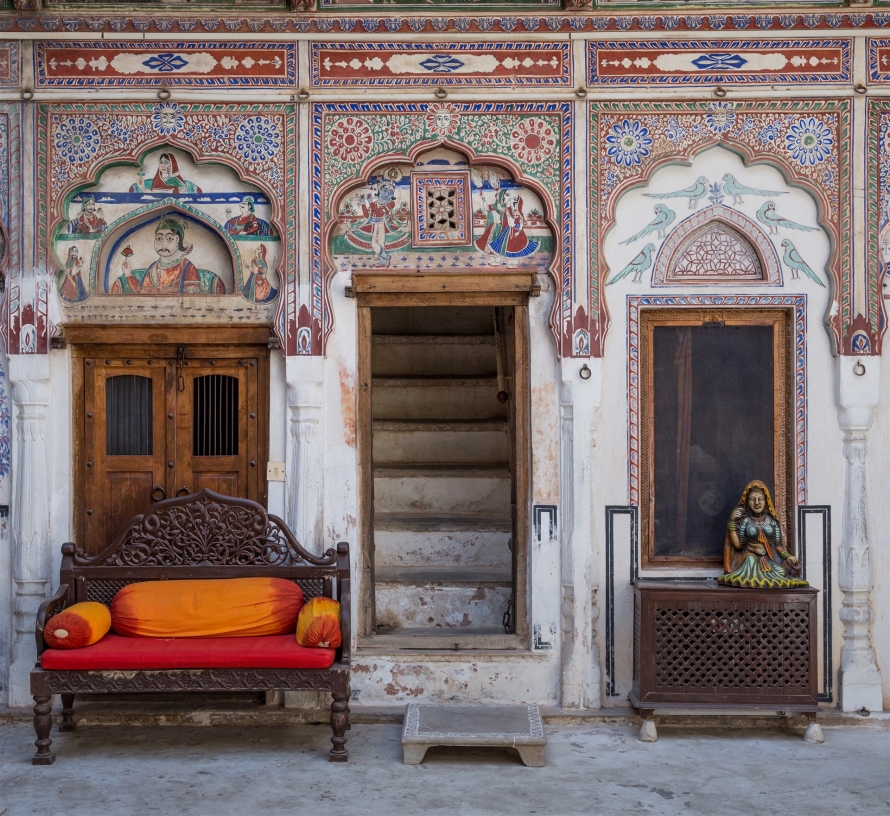
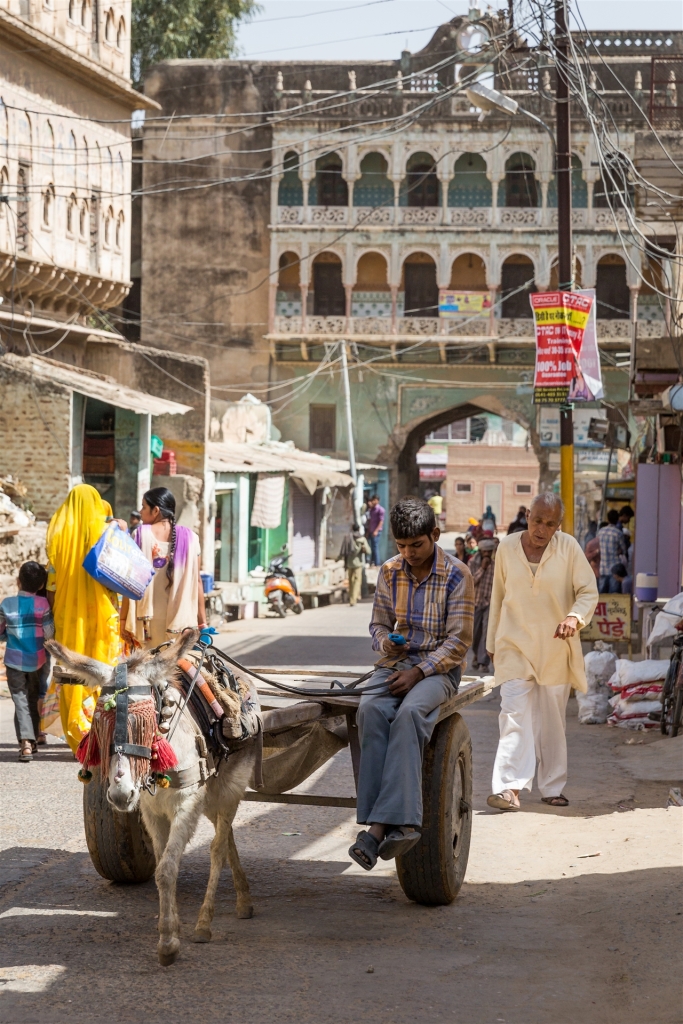
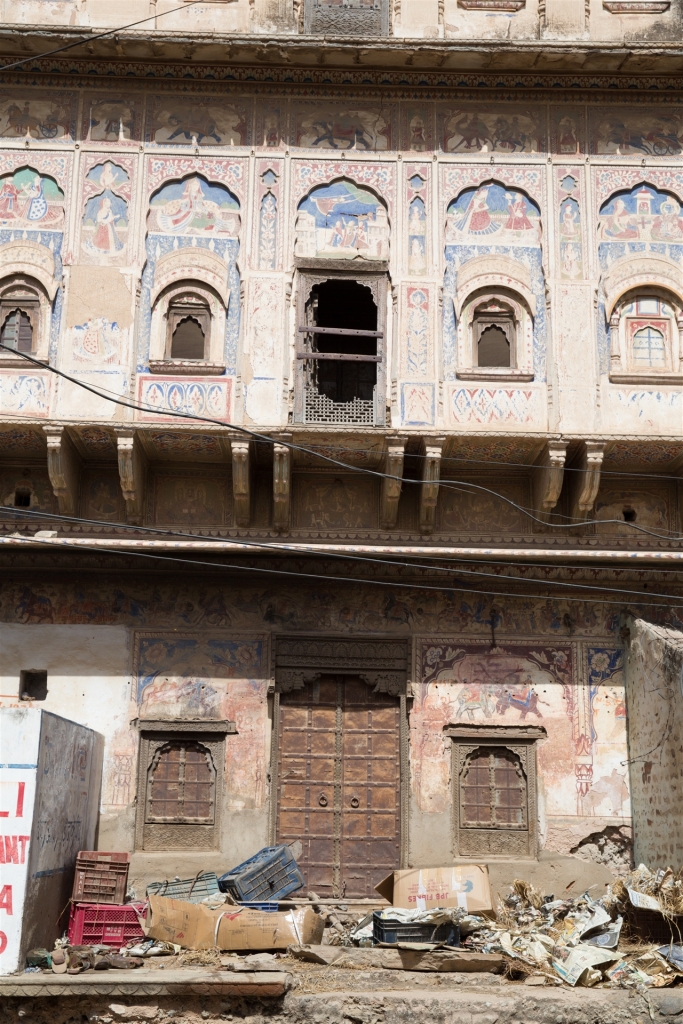
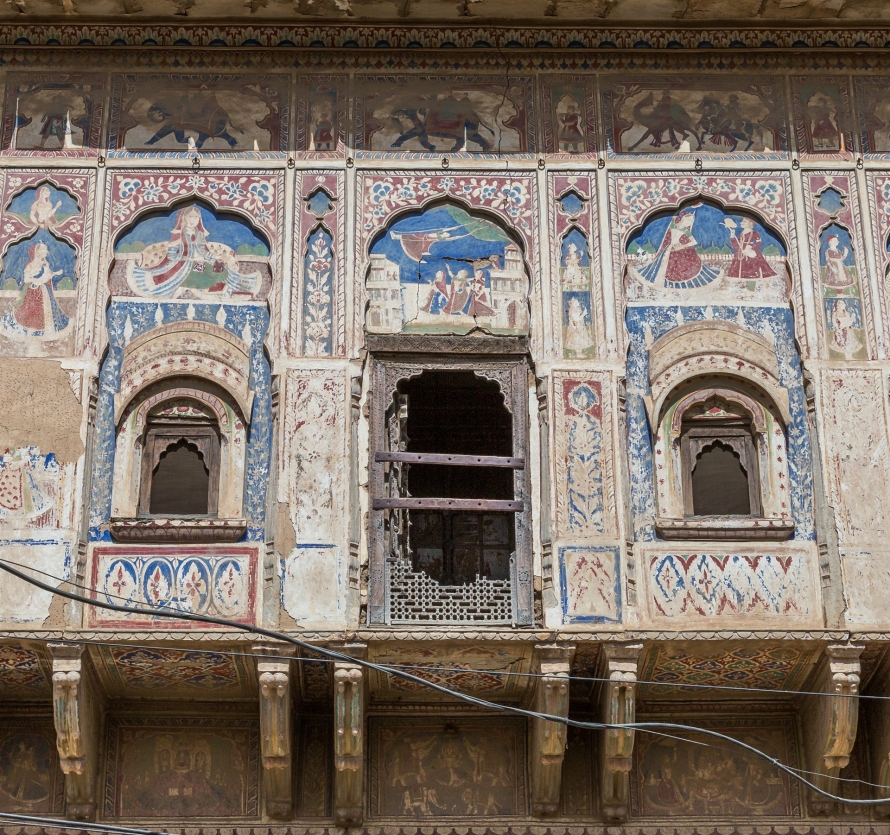

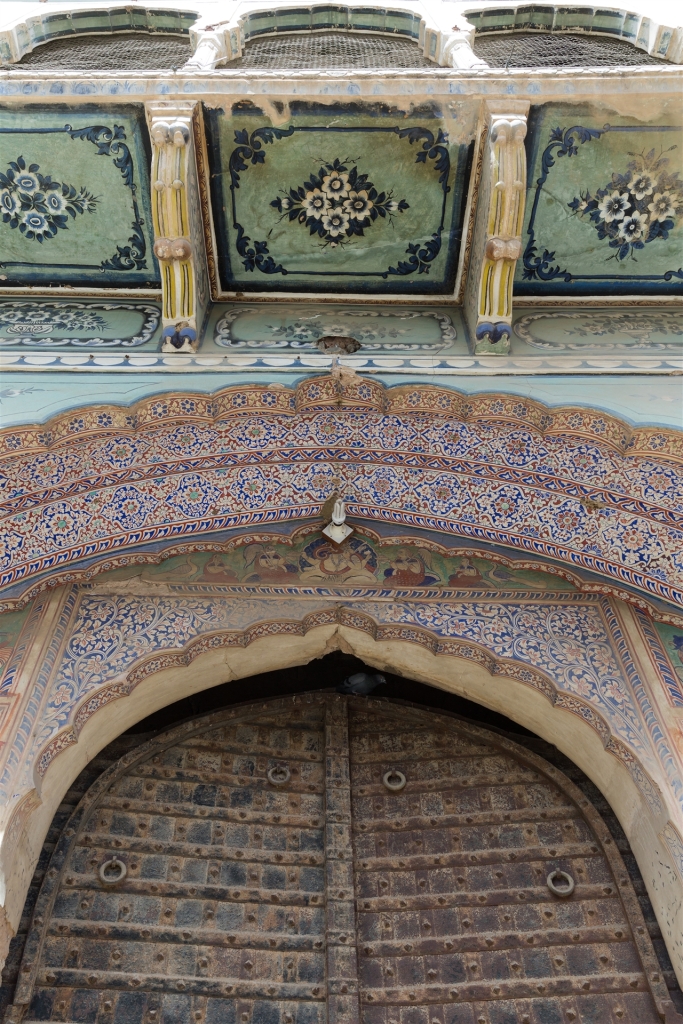
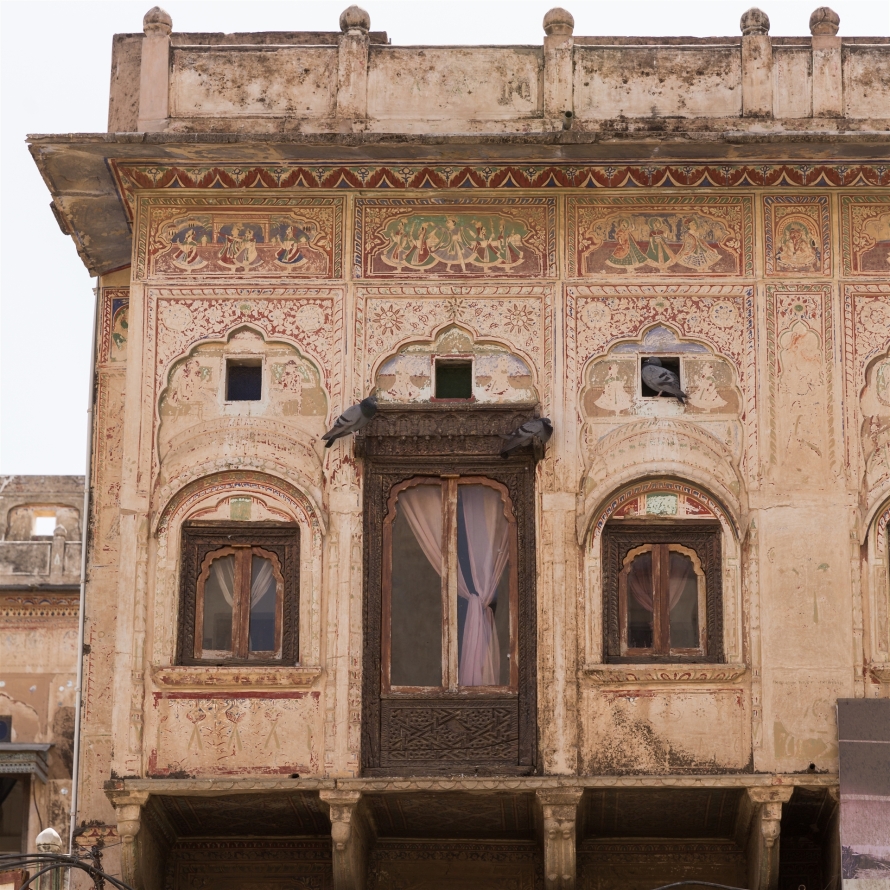
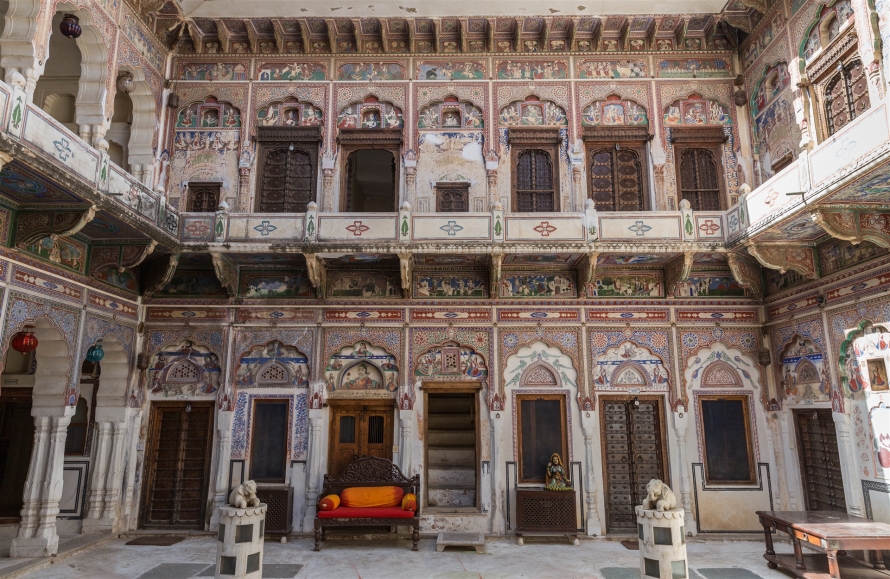
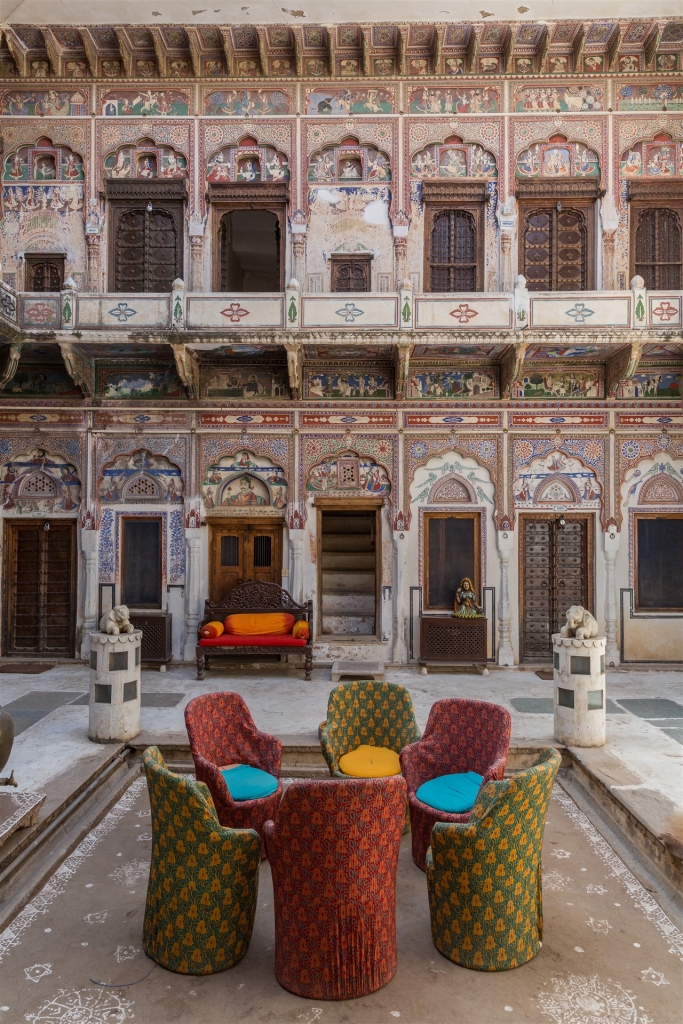
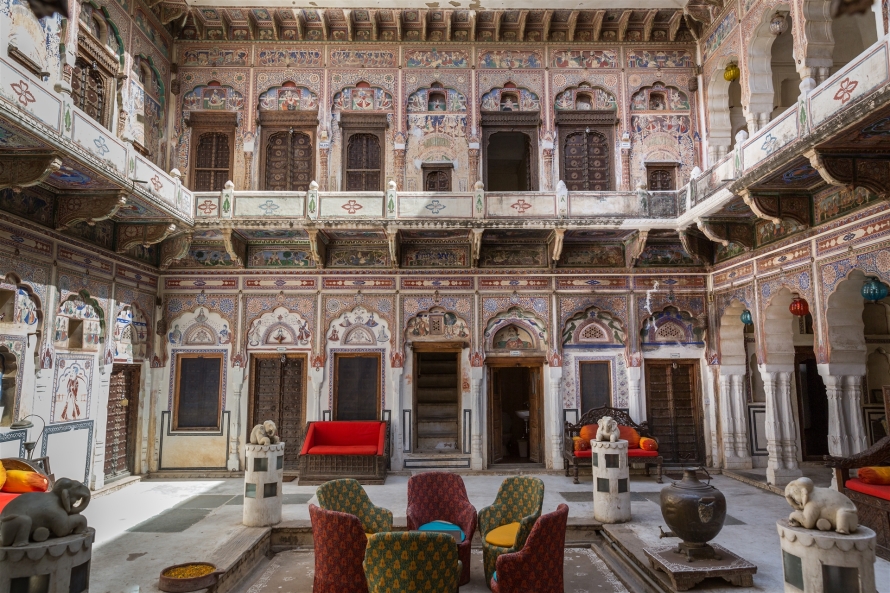
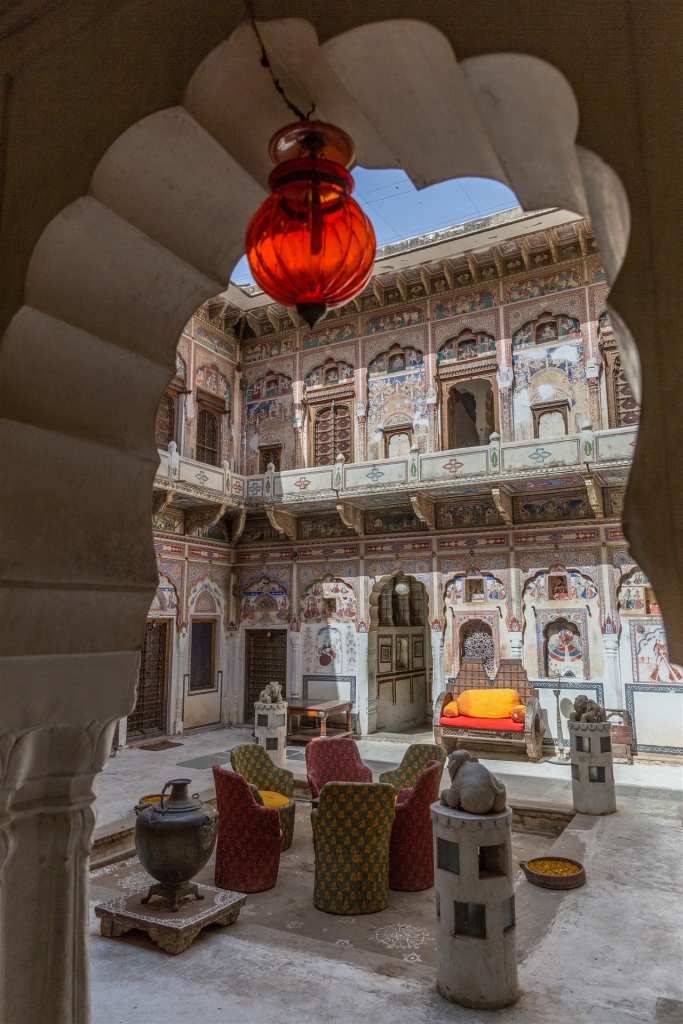
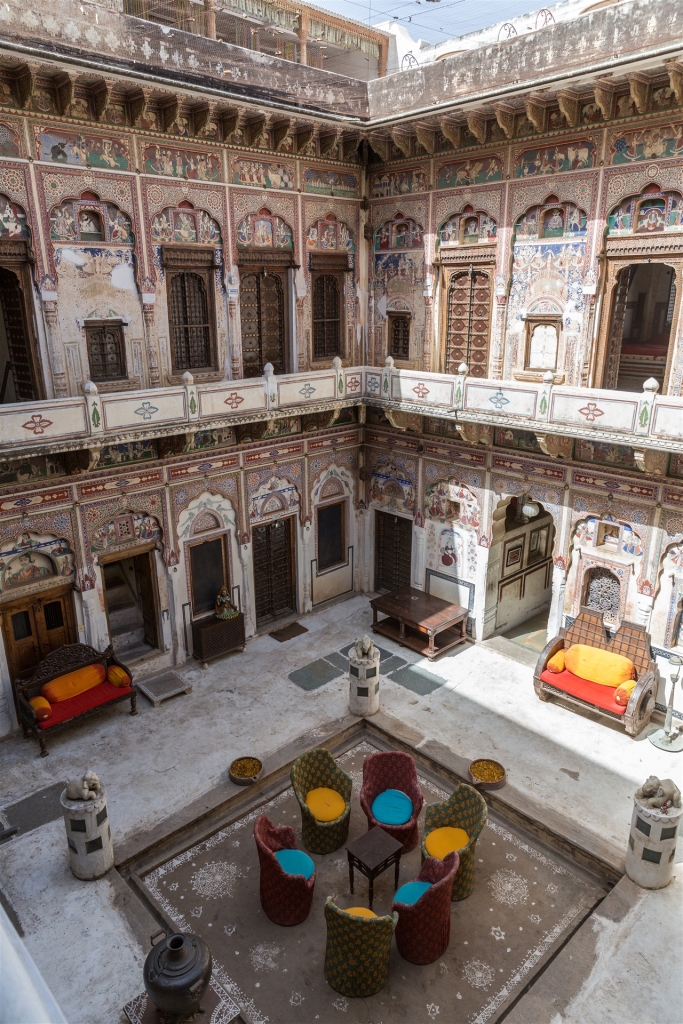

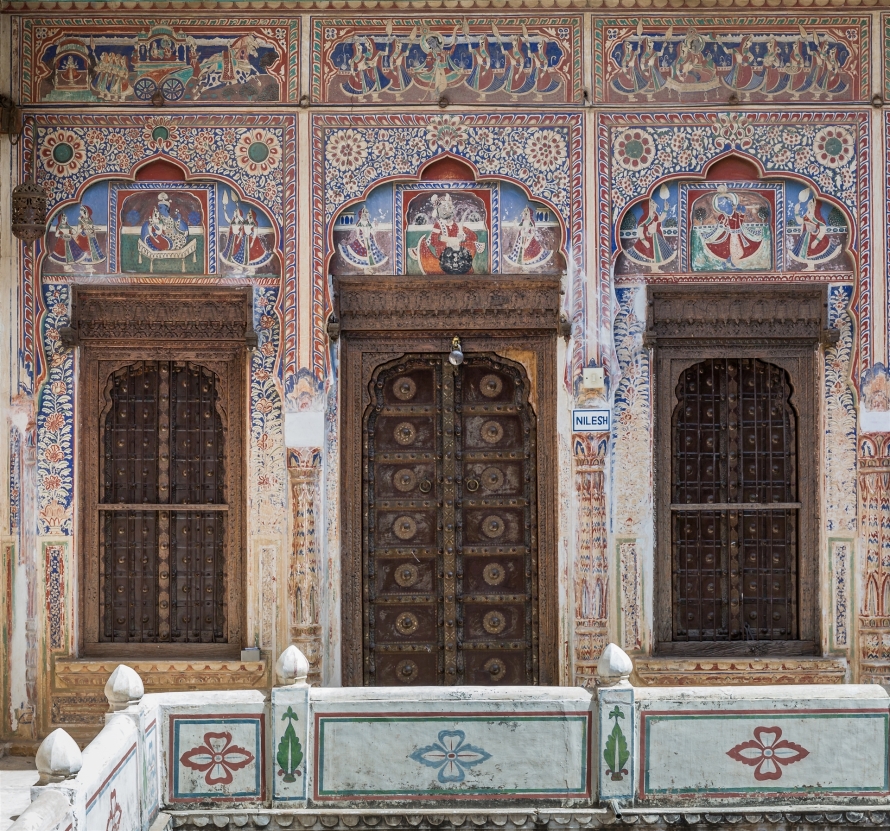

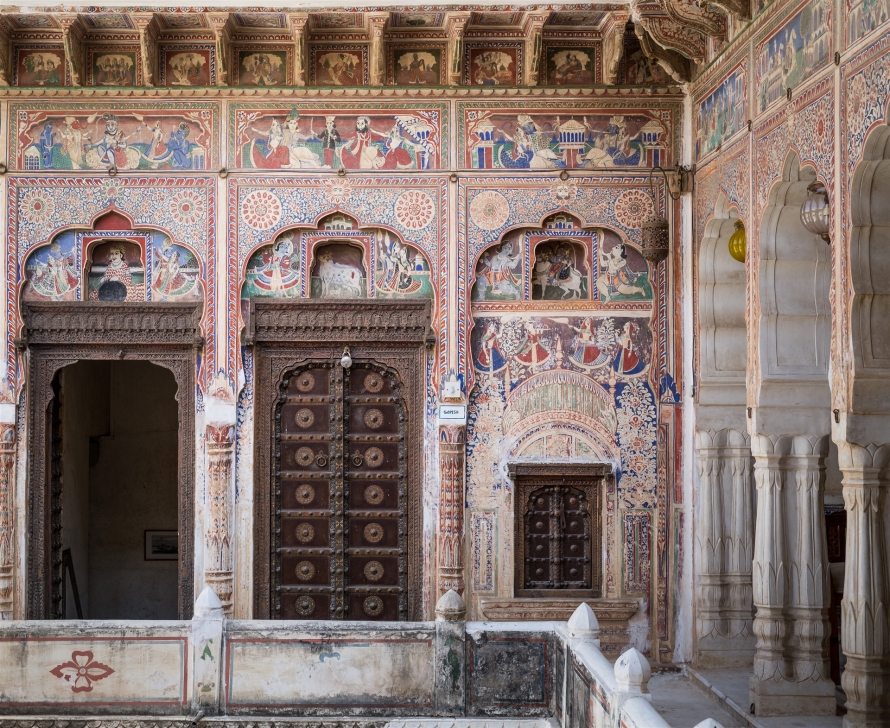

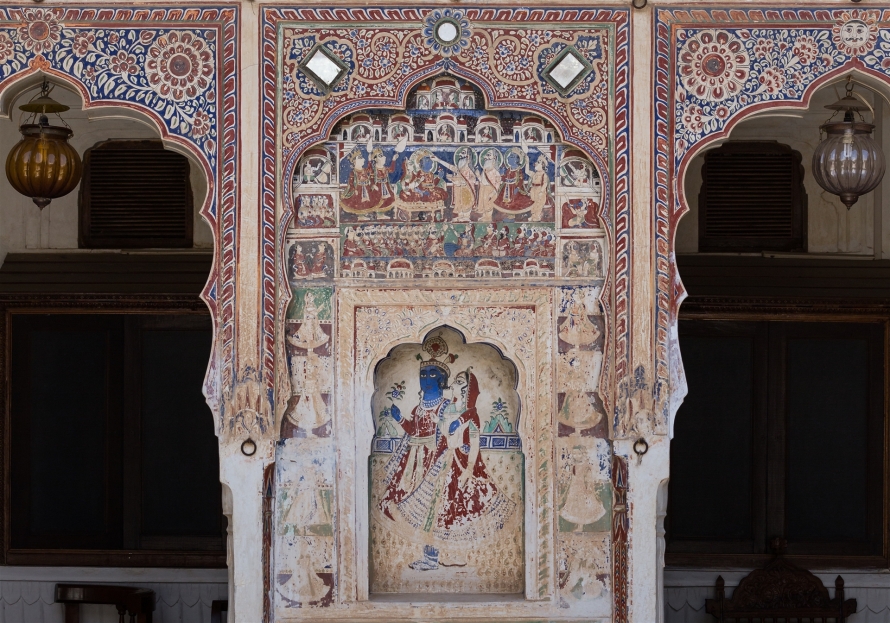
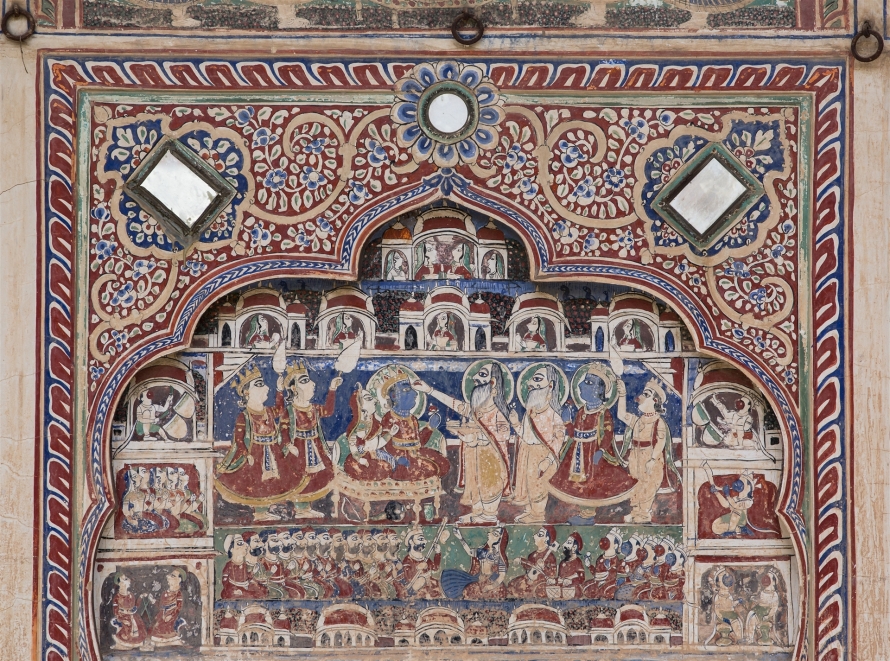
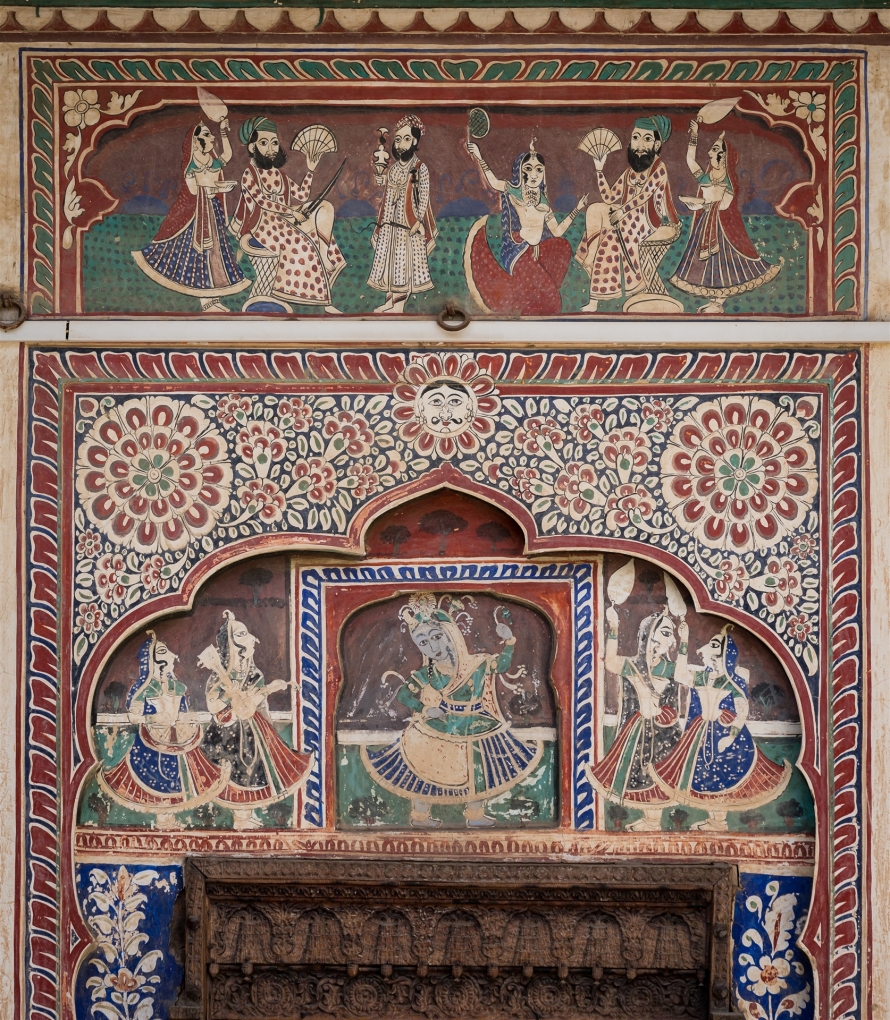

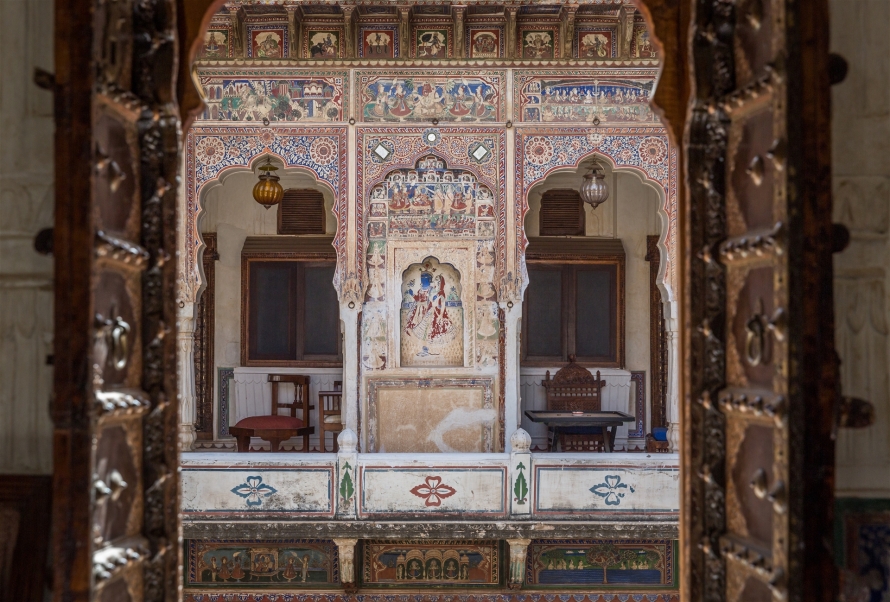
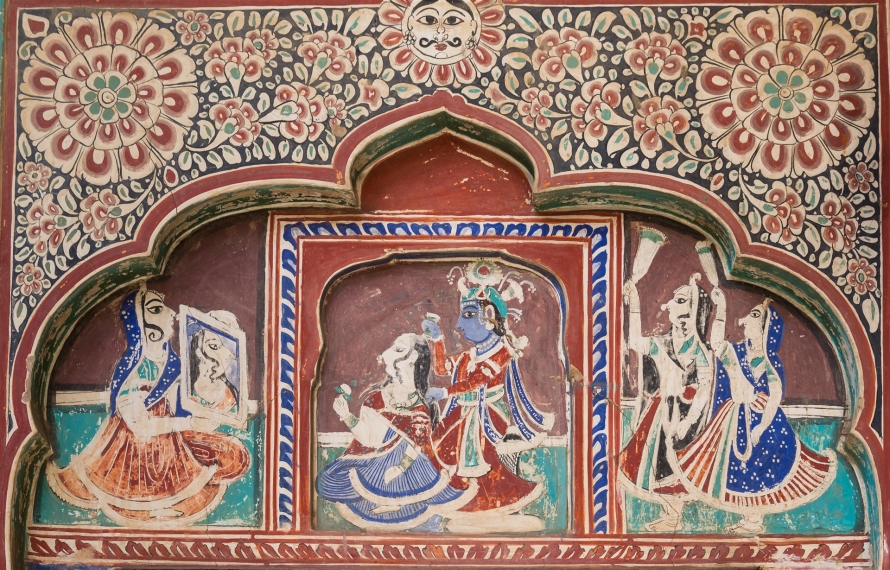

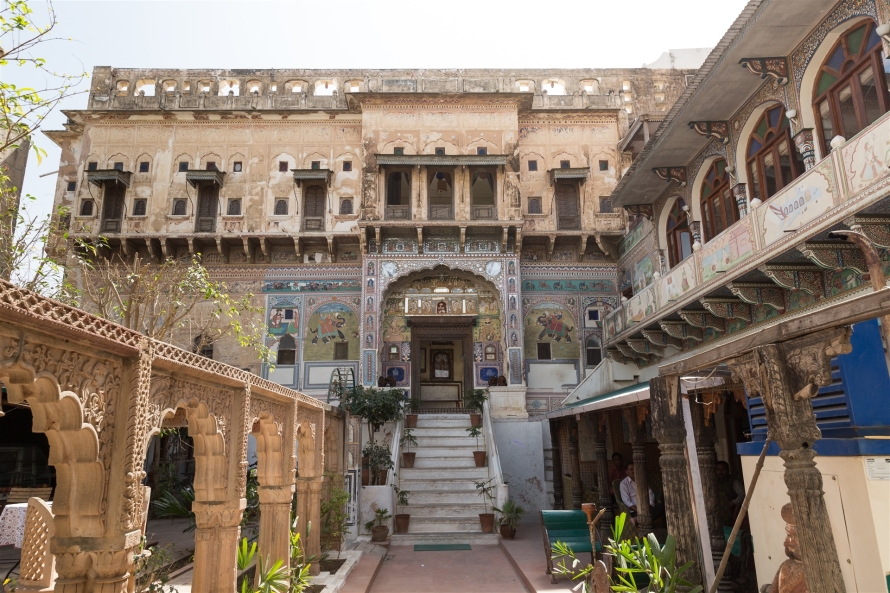
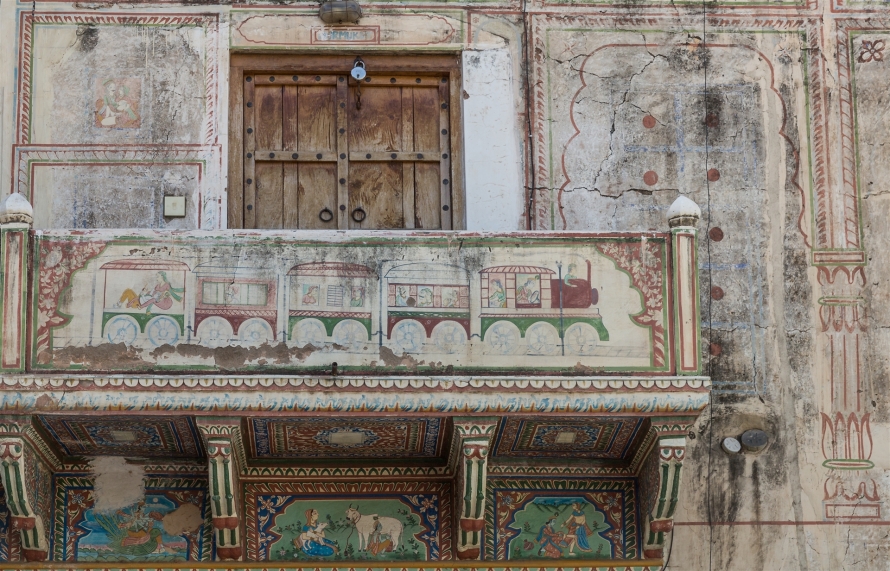




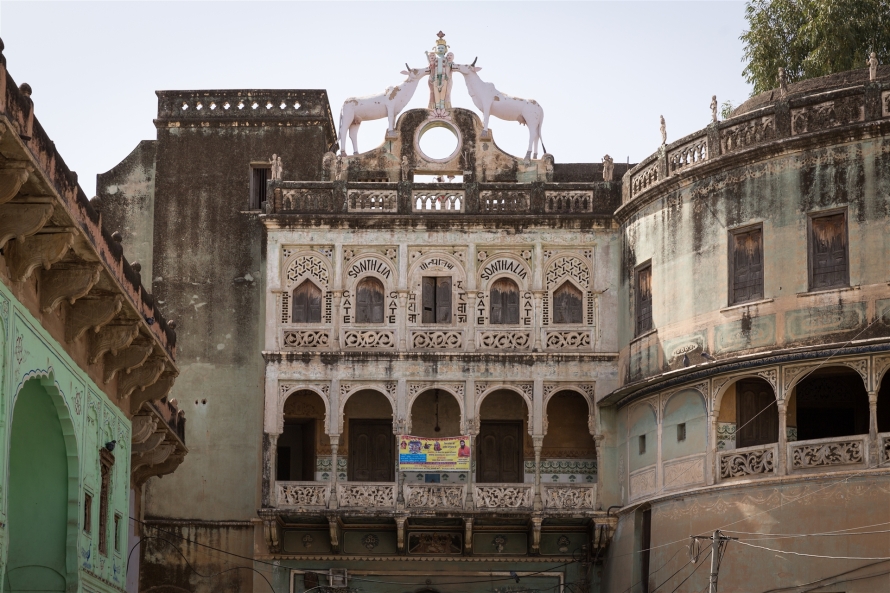
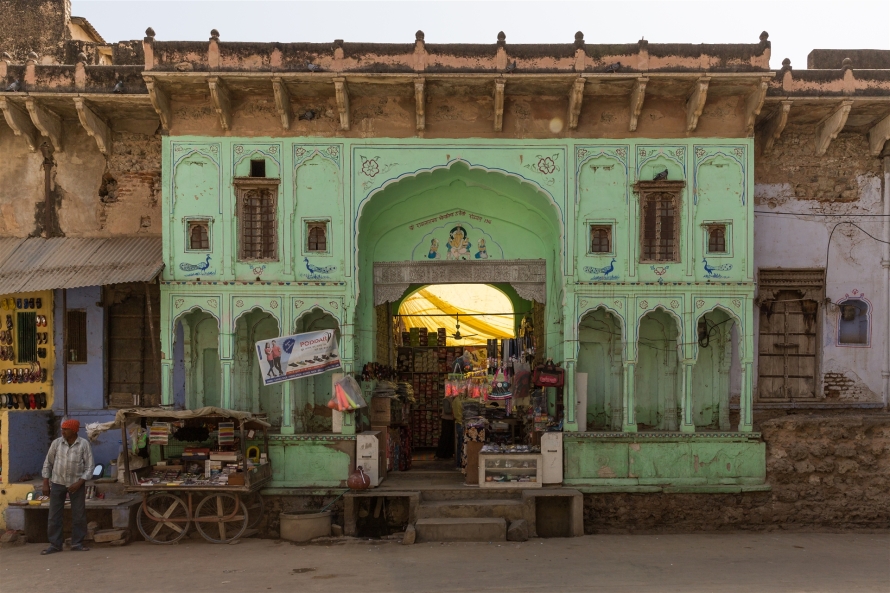

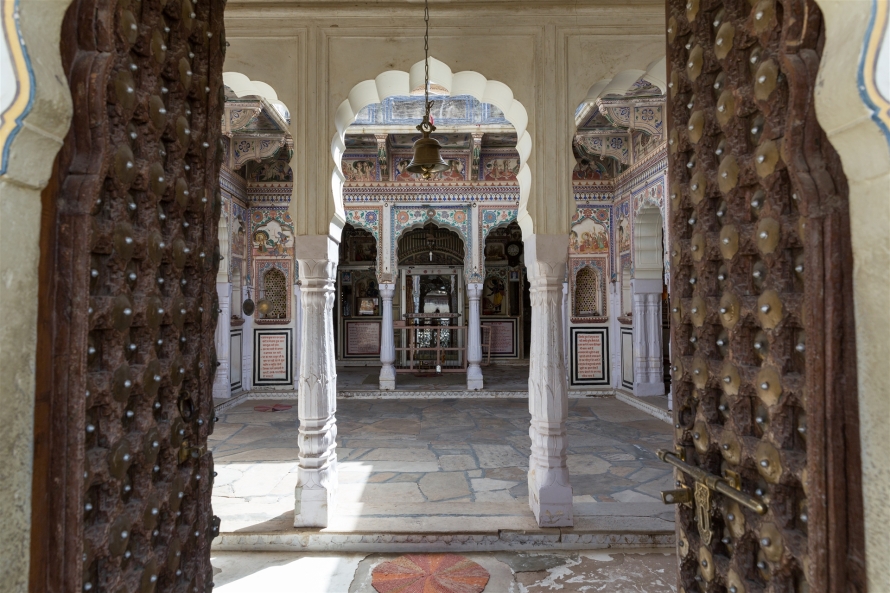

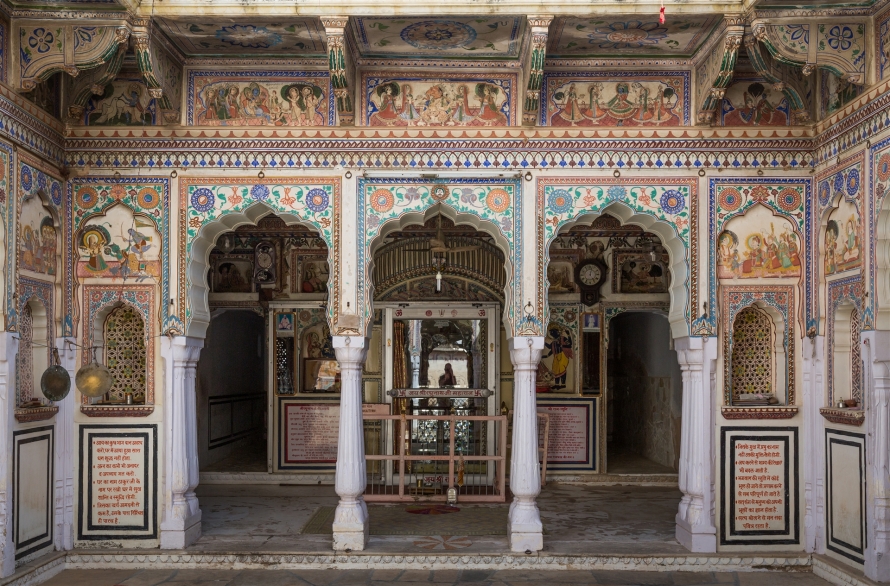
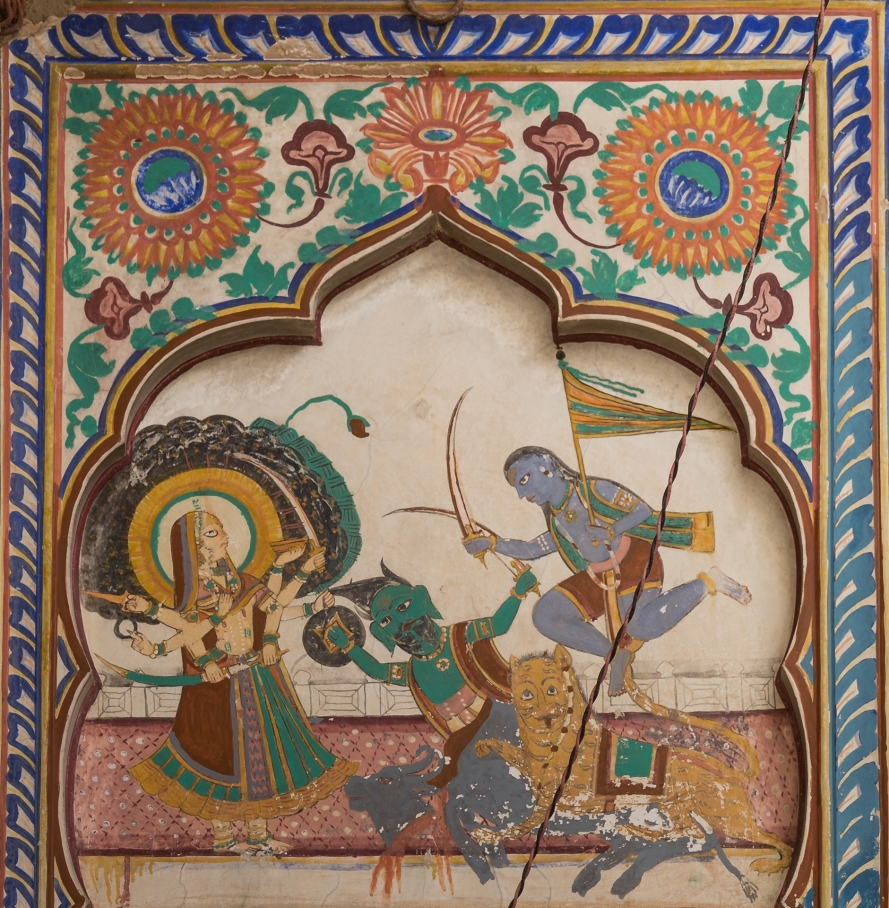
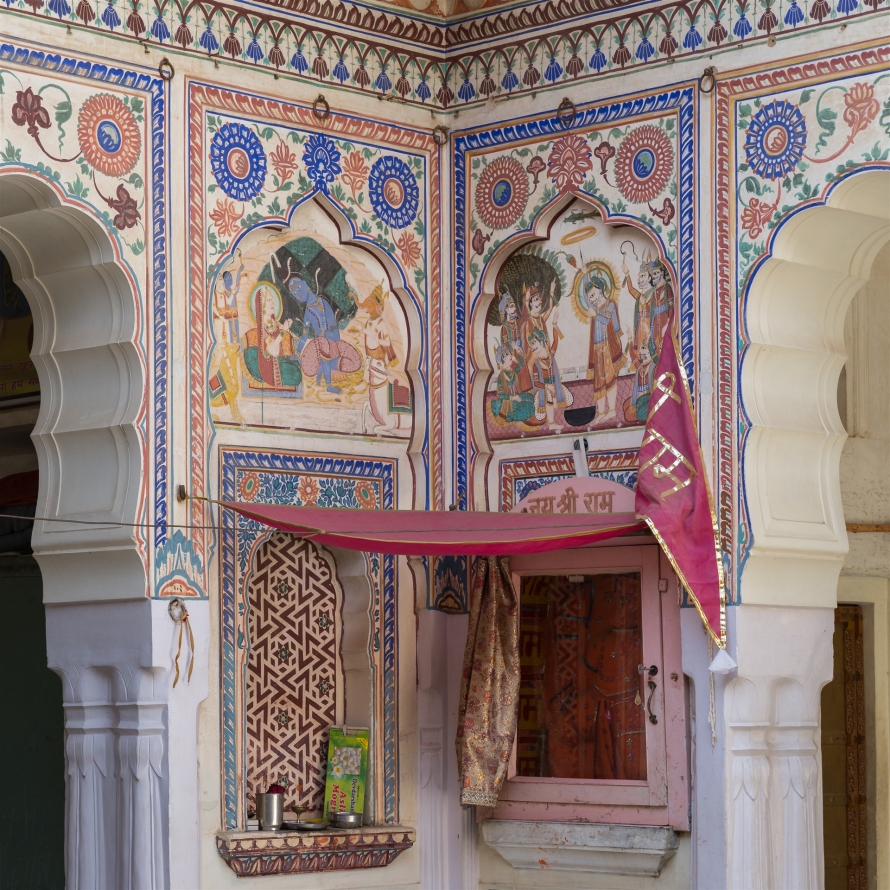



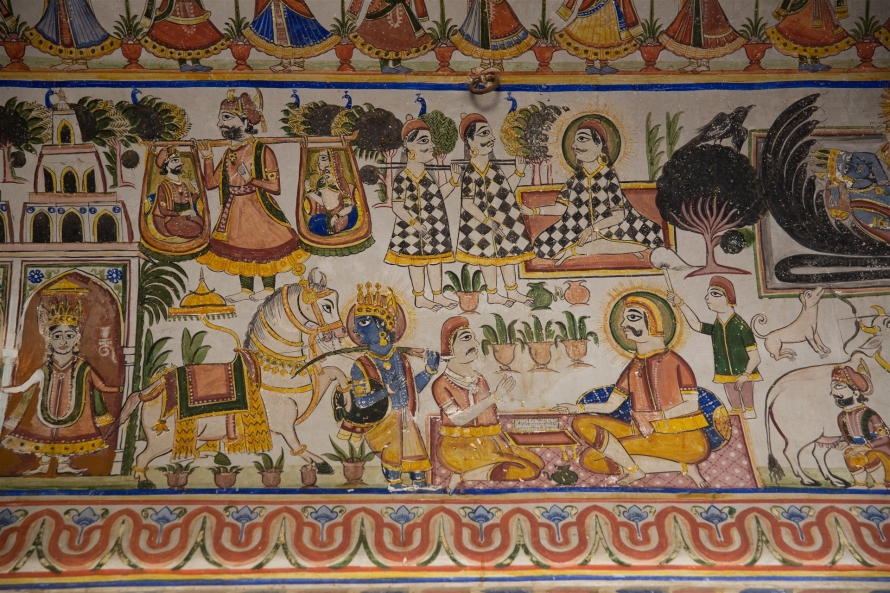
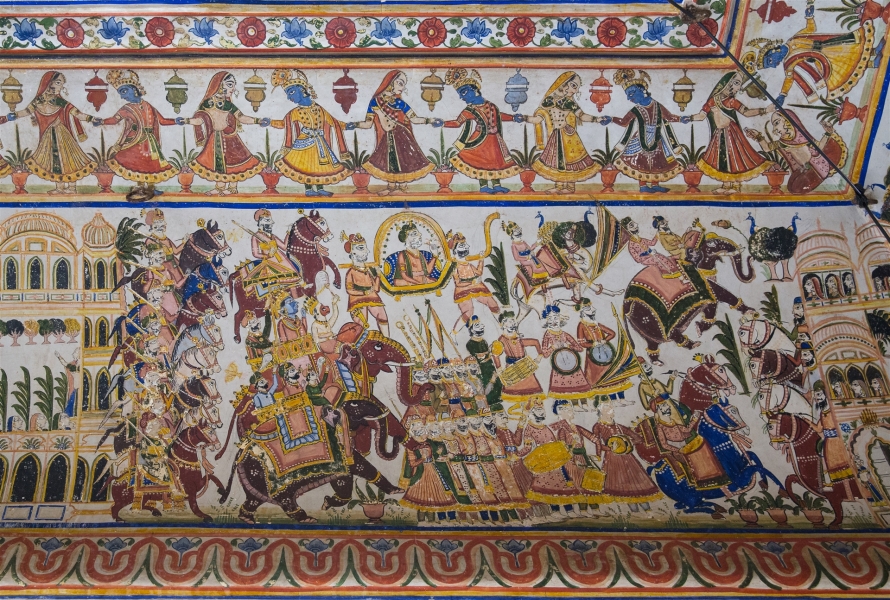
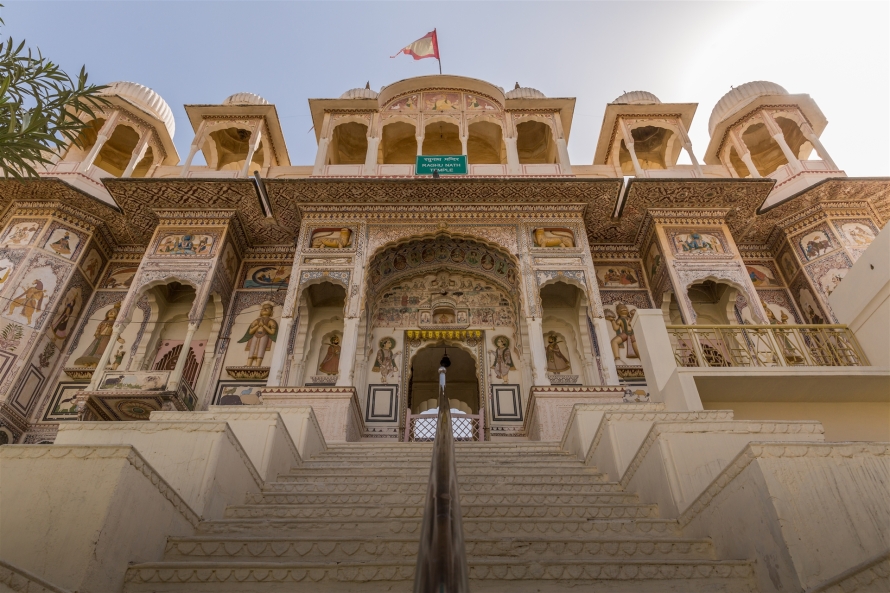

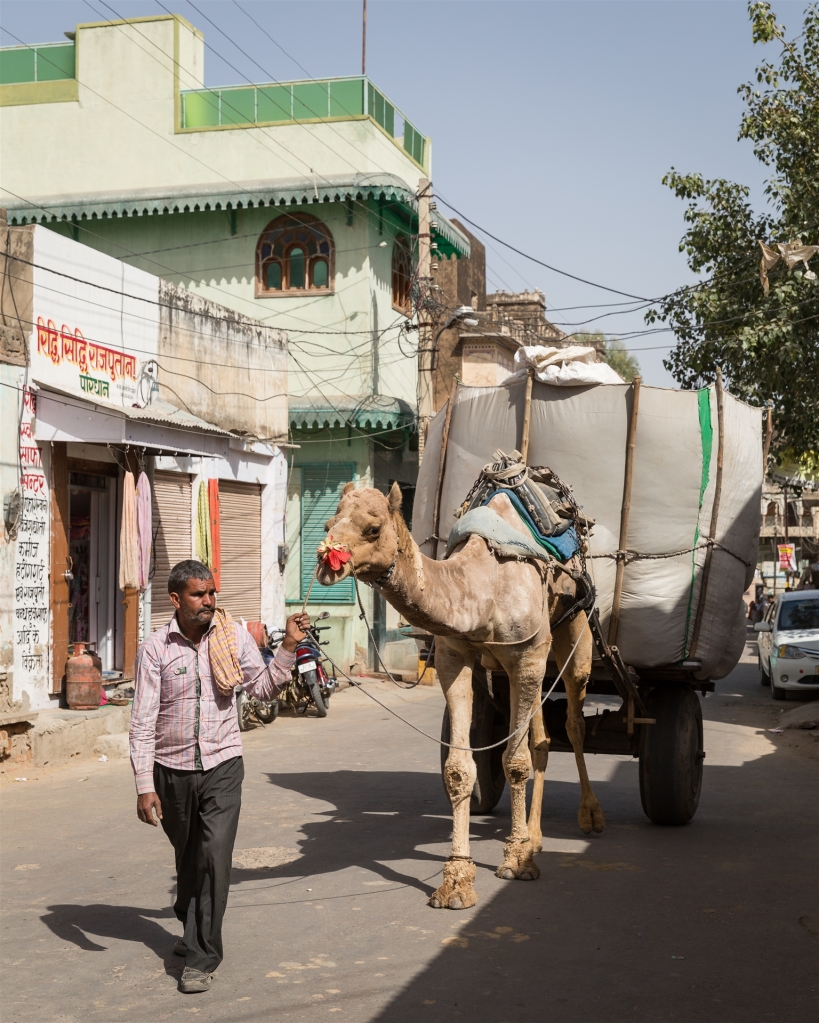
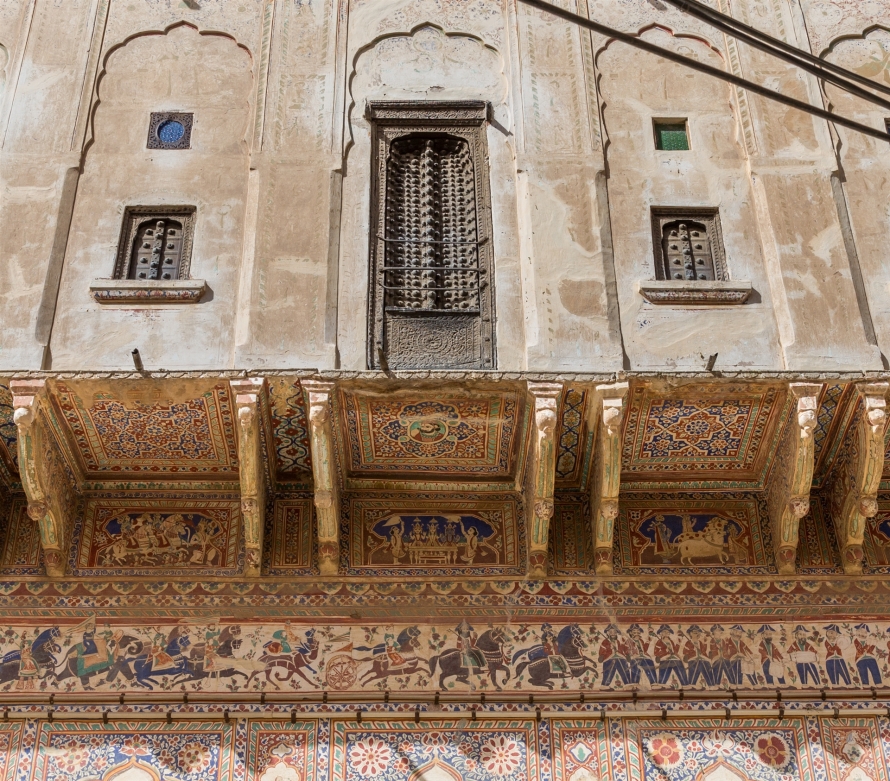
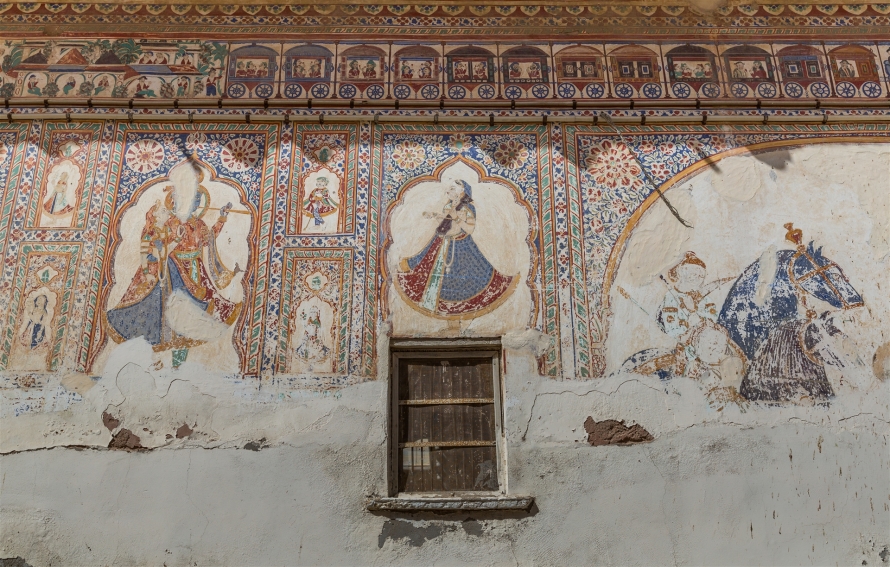

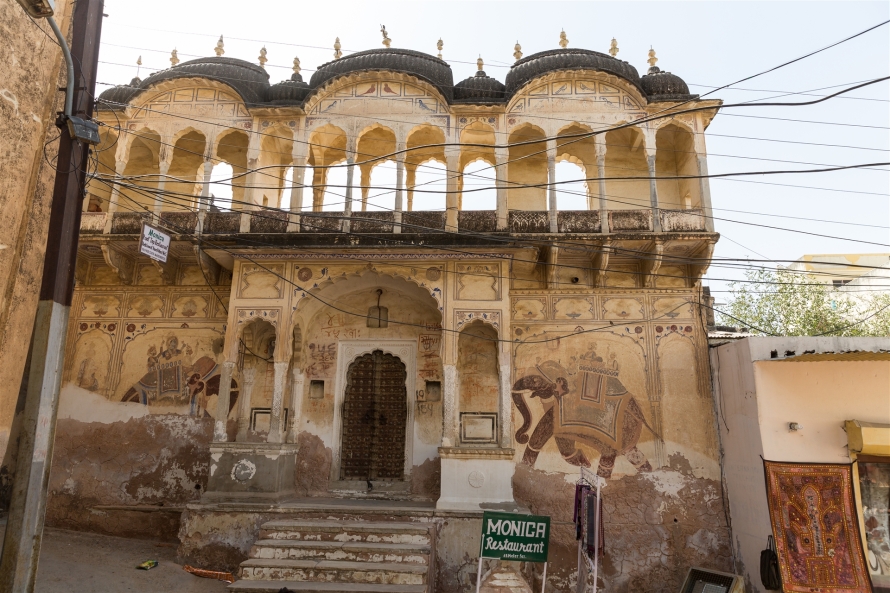

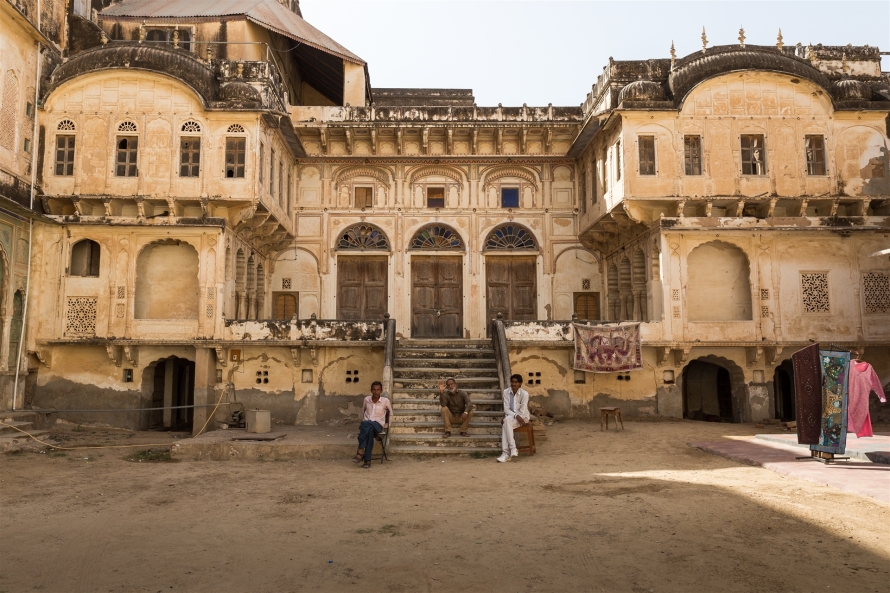

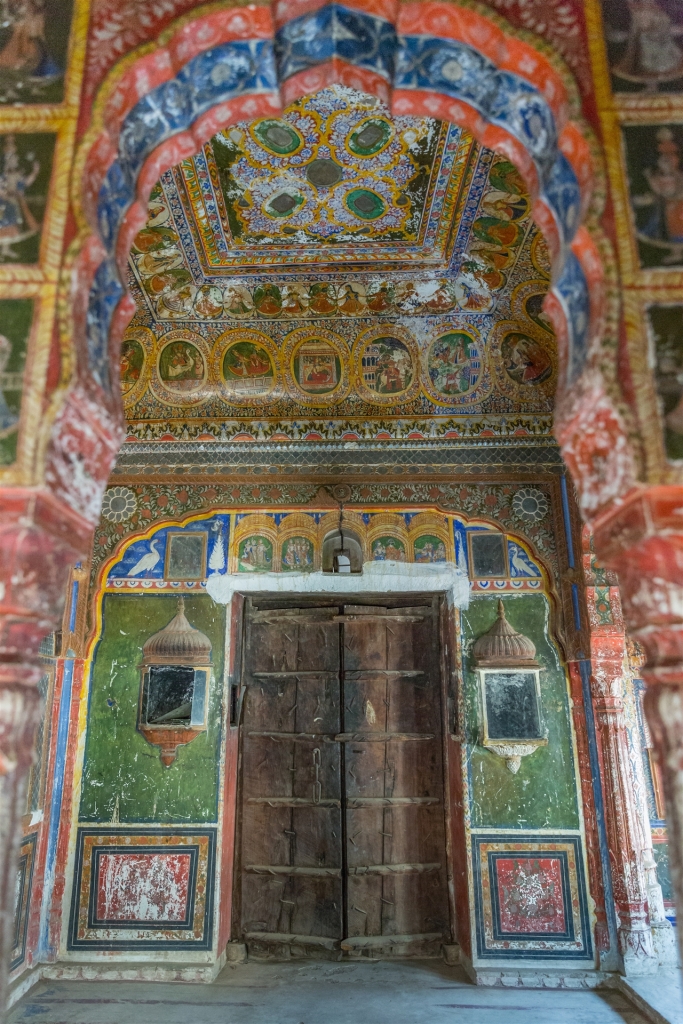

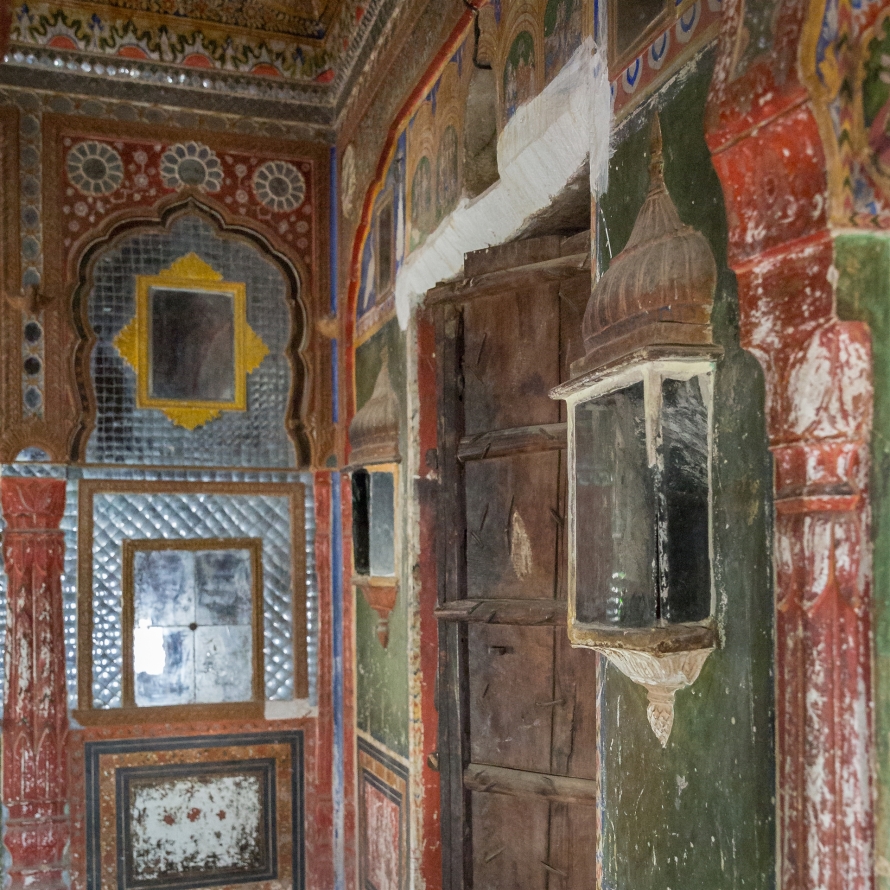
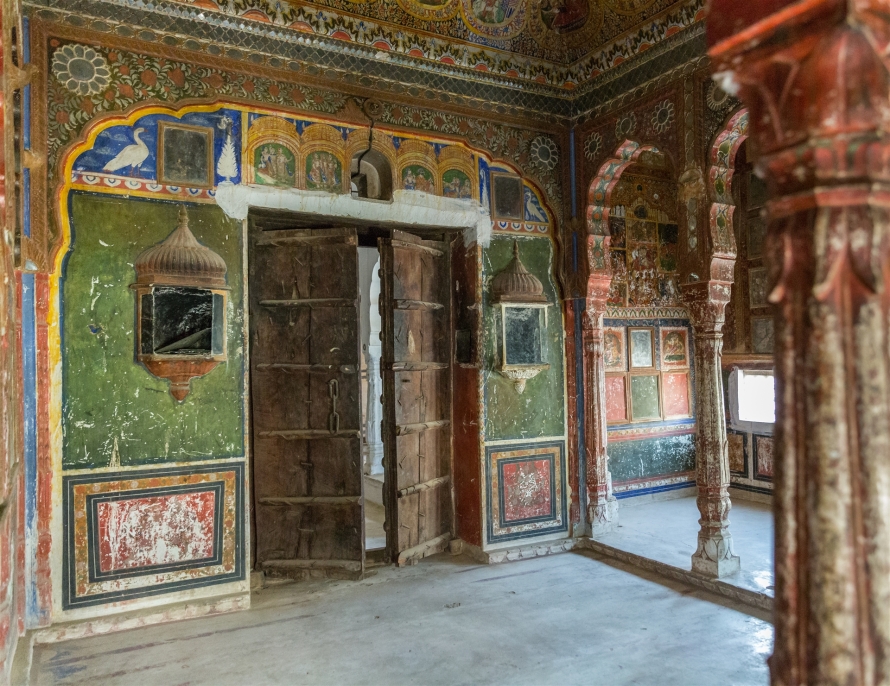
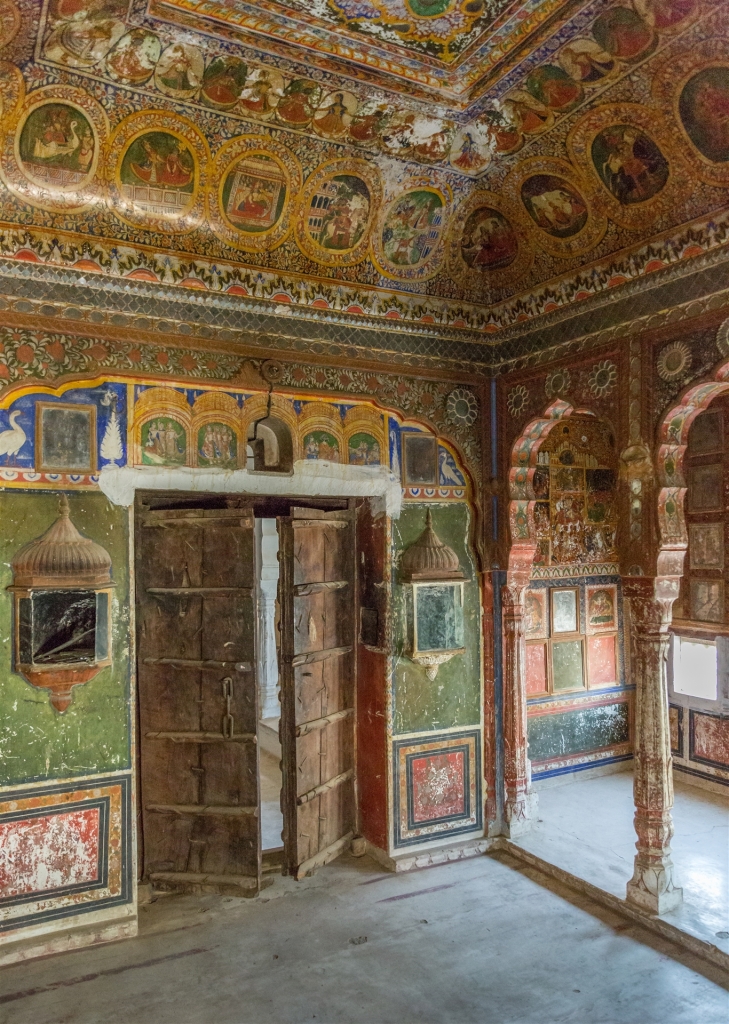
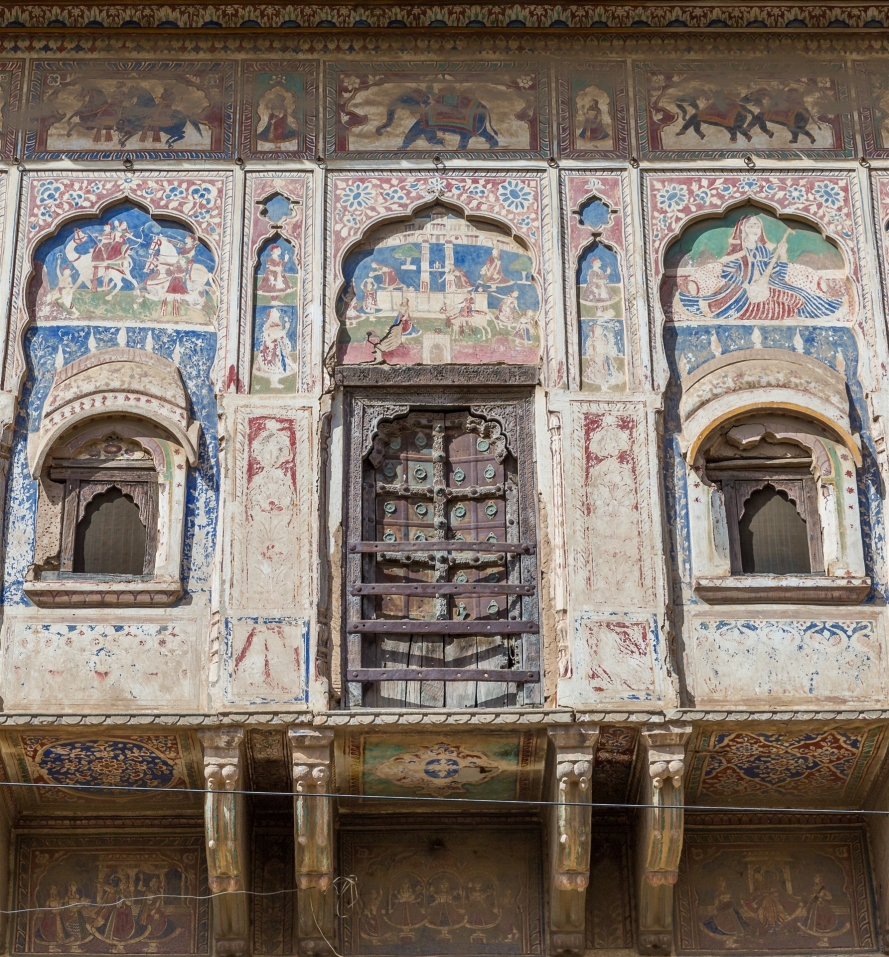




Hi Kevin, Fantastic photos of the Mandawa havelis.
I visited the Shekhawati region in January this year and visited about 7 towns and will be writing about each one of them. Mandawa was my least favourite of the towns in Shekhawati.
Did you visit other towns in the region?
LikeLike
Hi,
Thanks for your comment, the first one on this blog !
I was really pushed for time and could only afford a single day out of Jaipur to do this, so I picked on Mandawa as it seemed to be the most popular. I say popular, in February it didn’t seem to have any outside visitors at all !
If I could do it again I would definitely spend about 2-3 nights in Mandawa and treat it as my base for exploring more of the town and the surrounding places. I’m an amateur archaeologist so this sort of thing really interests me, it’s such a shame seeing these places crumbling in front of your eyes. I’m glad I got there before too much more disappears.
I’m adding to the blog almost daily, just moved on to Gujarat but I’ve been to India 15 times so there’s a lot more to post !
-Kevin.
LikeLike
Hello Kevin
Great to have found your blog. It’s wonderful.
We share the same interest or passion for Rajasthan. You photograph it, I paint it.
All the very best.
Shuchi krishan
LikeLiked by 1 person
Namaste Shuchi,
Thanks for your kind words. There’s a wonderful book I picked up in Mumbai last month on this subject – The Painted Towns of Shekhawati by Ilay Cooper. She started recording the art of the region in the mid 70s, sadly quite a lot of it has now been painted over !
LikeLike
Hi Kevin
Its wonderful to see some of Mandawa, which happens to be my hometown. My Grandfather was a trader there himself but yes, eventually he himself moved outwards to Mukundgarh, a place very near by. All of his six sons (including my father) have moved out to better cities for better opportunities.
Your blog refreshed my childhood memory of a very few visits to Mandawa. So Thanks!
Next time you are around here, do visit the “Rani Sati Temple” in Jhunjhunu. There are many followers who come and pay visit to this temple from all across the country and abroad! It is a well maintained temple, with facilities of lodging and meals.
Keep up the good work, you are capturing our country in a beautiful way!
LikeLike
Thanks – I really wish I had got more time in Mandawa, but glad I made the effort to get there to see it. Thanks for the temple recommendation, I will note it down !
LikeLike
Enjoyed this blog very much. Went to to Mandwa last November and took lots of photographs.Published a few here : http://przmm.blogspot.com/2015/04/outdoor-gallery-of-paintings-of.html
LikeLike
Good but a new information has to be added : Mandwa was founded by Mandu Jat.
Mandu Jat is the founder of Mandawa town in Jhunjhunu district in Rajasthan.
Shekhawati Bodh, A monthly magazine of Shekhawati region, Mandawa special issue, July 2005 published the following information about Origin of Mandawa town in Rajasthan:
“Mandu Jat founded Mandawa village. He first established a dhani (helmet) and dug a well here, which was completed on savan badi 5 samvat 1797 (1740 AD) . Initially this place was known as ‘Mandu ki dhani’, ‘Mandu ka bas’ or ‘Manduwas’ which changed to ‘Manduwa’, ‘Mandwa’ and finally ‘Mandawa’.”
LikeLiked by 1 person